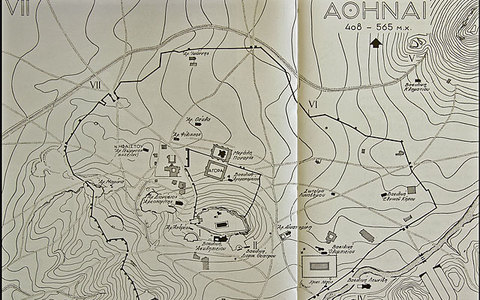Given that more than 15% of Greece's GDP comes from tourism, the increased interest of foreigners to invest in the industry is completely natural. And besides natural resources like the sun and the sea, there are favourable conditions in the country for the development of cultural and archaeological tourism.
A few days ago, during a road show organized by the Athens Stock Exchange in New York, the interest was roused by the presentation of a project by the U.S. giant Ralph Appelbaum Associates. The project aims at a more optimized utilization of the sights in Athens, and in particular at the creation of a wide region for tourist attraction, which will start from the Acropolis and reach the port of Lavrio.
The project's budget ranges between 1.46 billion and 4.38 billion euro, and capitals will come mainly from foreign funds. The benefits for Greece are calculated at revenues of 2.08 billion to 6.12 billion euro by the end of 2020 and the creation of 5,840 to 17,180 new jobs over the same period, depending on the selected investment plan.

The benefits
According to the econometric model developed by the company ΙΟΒΕ on behalf of Appelbaum, if tourists visiting Athens extend their stay by one day, this could lead to an increase in GDP of 320 million euro per year, and to the creation of about 7,000 new jobs. And if the stay is extended by three days, the corresponding figures will increase to 960 million euro per year and nearly 21,000 new jobs. Moreover, the industry of tourism would register additional revenues of 213-640 million euro annually.
The project of Ralph Appelbaum Associates, the largest company in the world to design museums, was completed at the end of last summer, and its object is the utilization of the vast and unused cultural heritage of Greece. According to senior officials from the U.S. company, "Greece should use modern technology to make the visits of tourists richer in content and longer in duration."
In three directions
The main objectives are for tourists to stay in Greece as many days as possible (one more night), and subsequently for revenues to be increased by the provision of pleasant cultural and educational experiences. Also, attracting Greeks from abroad and all friends of Greece is another goal.
Appelbaum's project of the Acropolis area is developed in three directions:
1. Tourists are to be able to begin their tour (as in the classical era) from the gates of the city, both day and night.
2. The story of the birth of democracy, drama and philosophy is to be told in the "classic city" where these elements of Western civilization were born.
3. Tourists are to be considered as customers and to be provided basic services which will make their stay more enjoyable.
The project
In order to prolong the stay of foreign tourists in Athens, Appelbaum's project provides for the creation of a larger area for visits, and in particular the route to the Acropolis, which will cross Panathenion Street.
The main street of ancient Athens started at the region of Kerameikos, it crossed the ancient Agora diagonally, and it reached the sacred hill of the Acropolis, almost at the entrance of the Parthenon (the Temple of Athena). This was the route of major parades during the Panathinei festivities, after which the street was named.
At the same time, in order to increase the interest of visitors in the ancient monuments, the American company proposes that certain activities along this route be carried out, which will include the best possible use of Plato's Academy and the New Acropolis Museum.
Finally, the focus will be put on the digital heritage, i.e. services will be provided through mobile telephony which will give information about each landmark, ticket sales, translation, content suitable for children, connection with social networks (facebook, twitter), etc.
Funding
According to Appelbaum's project, visitors should be encouraged to follow the traditional route to the Acropolis along Panahtineon St, as depicted on the friezes of the Parthenon.
The project also proposes that three more major destinations be included:
Plato's Academy: one of the most recognizable places in the world which is, however, used little.
The places where important battles for democracy were held, such as Marathon, as the Battles of Marathon and Salamis will be analyzed.
The mines of Lavrio: It is proposed that the history of the silver, which strengthened the Athenian democracy by financing the fleet of the ancient Greek polis, also be included.
Funding for the project will be provided mainly by two companies. A State public service organization, or a charity company from the United States, which will have the primary purpose of attracting foreign investments (except for Greece and the European Union), including funding through TIF (Tax Increment Financing). This is a tool to finance public projects of the U.S. economy, mostly from municipalities and communities. This tool finances activities in the form of a loan. With the help of TIF, "investments" will be considered as an advance payment of future taxes from tourist visits in Greece, based on a 30-year monthly repayment schedule.
Meanwhile, a Greek State Foundation (proposed name ''Athens 508 BC''), will take on the attraction of capitals from the European Union, but also from funding sources in the Greek state, based on the model successfully applied in the past by "Athens 2004" and "Athens Metro". It will take on the design and construction of the project, which will be owned by the Greek state. The two companies will be responsible for the selection of specialized companies which will help complete the project.